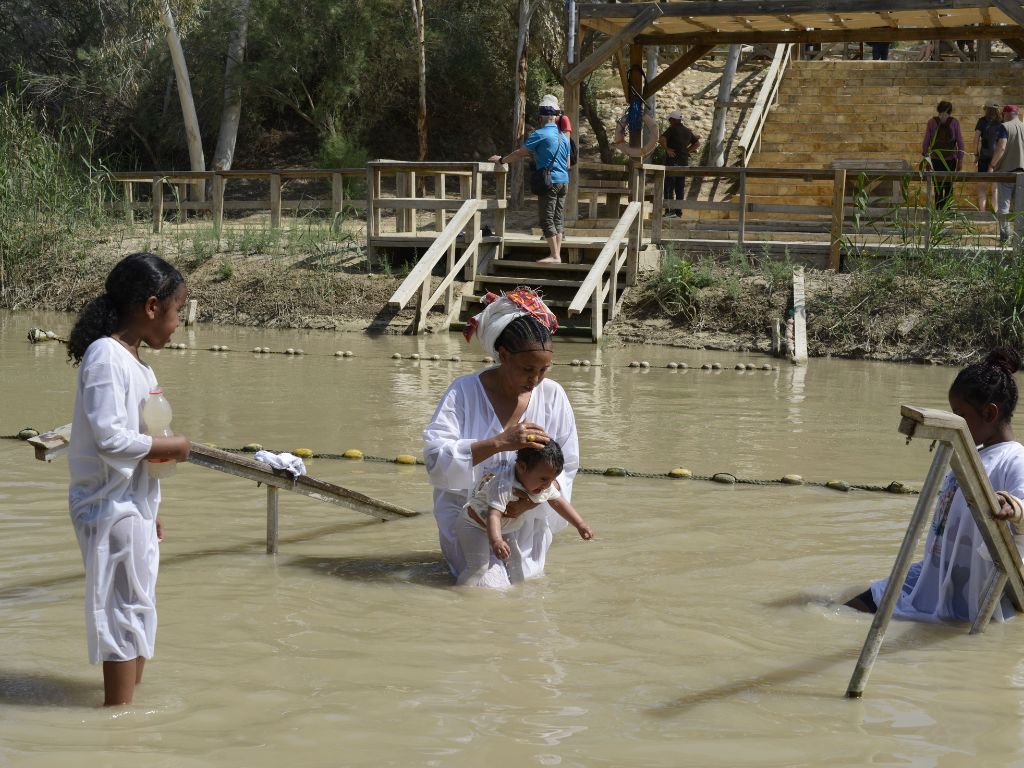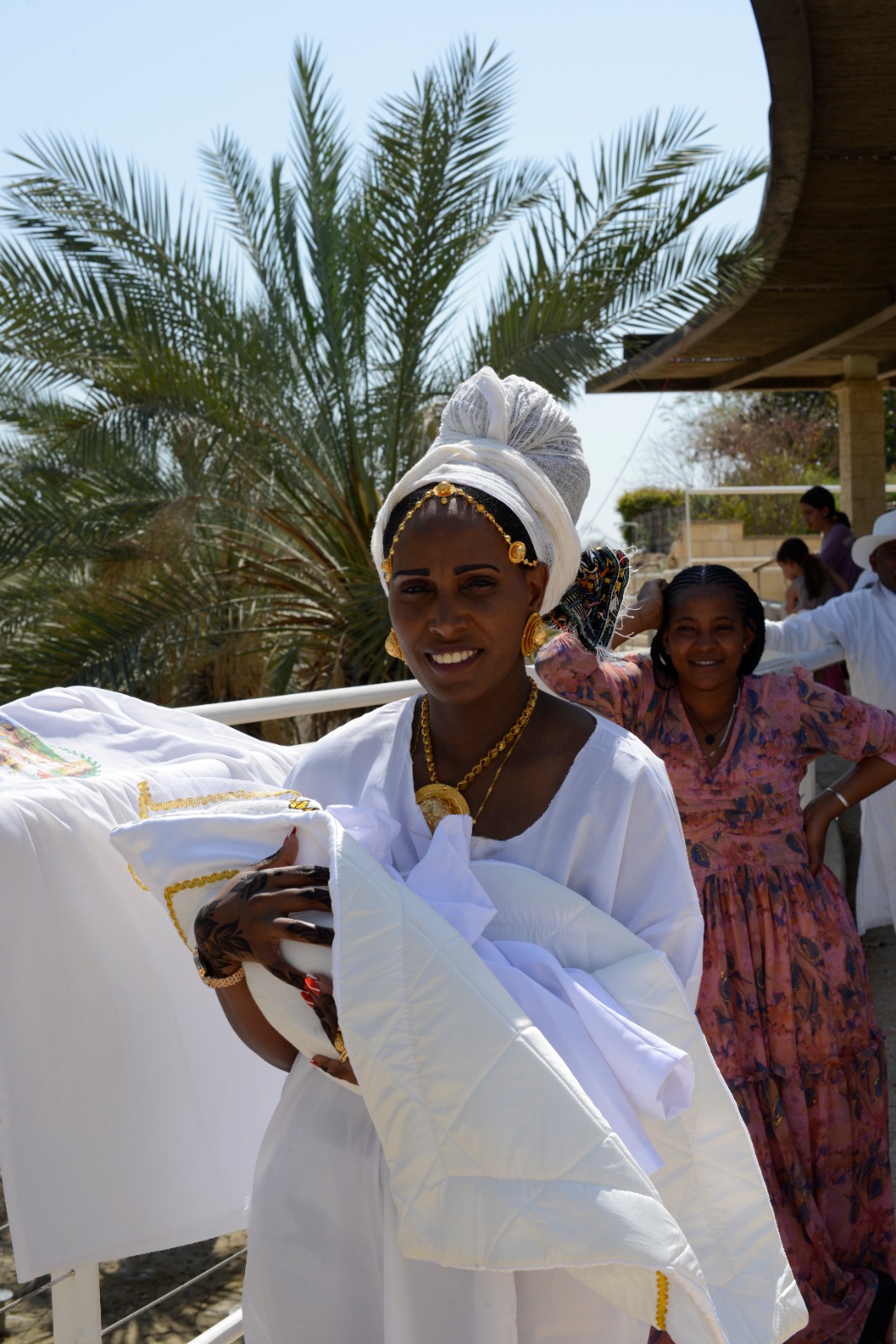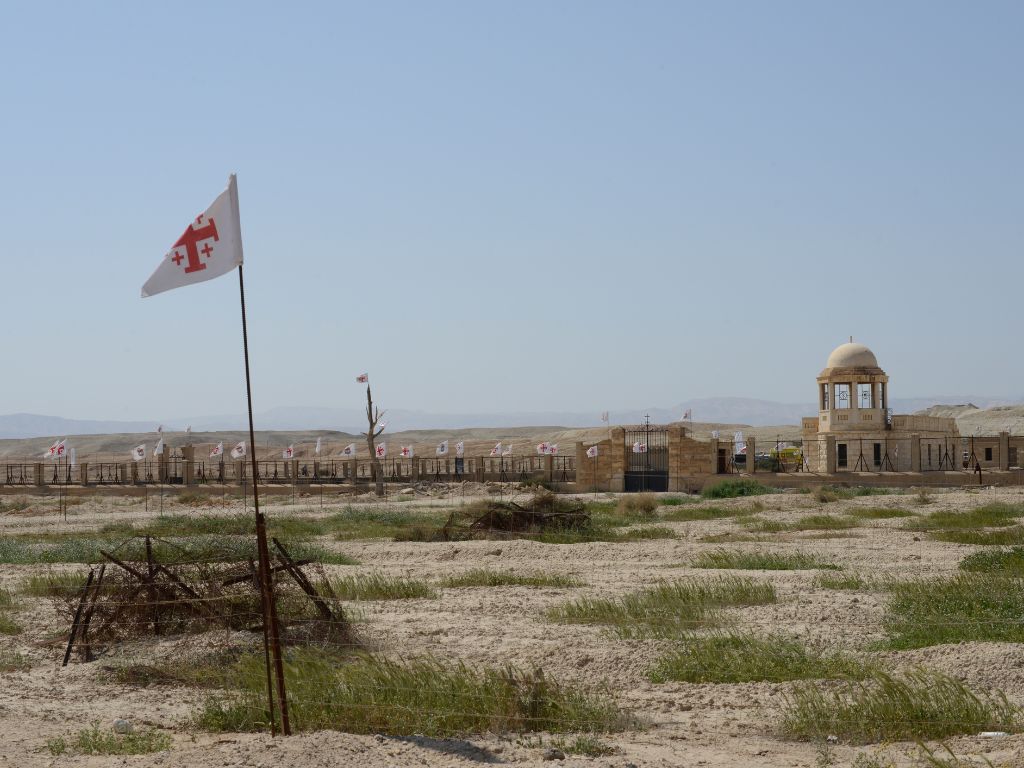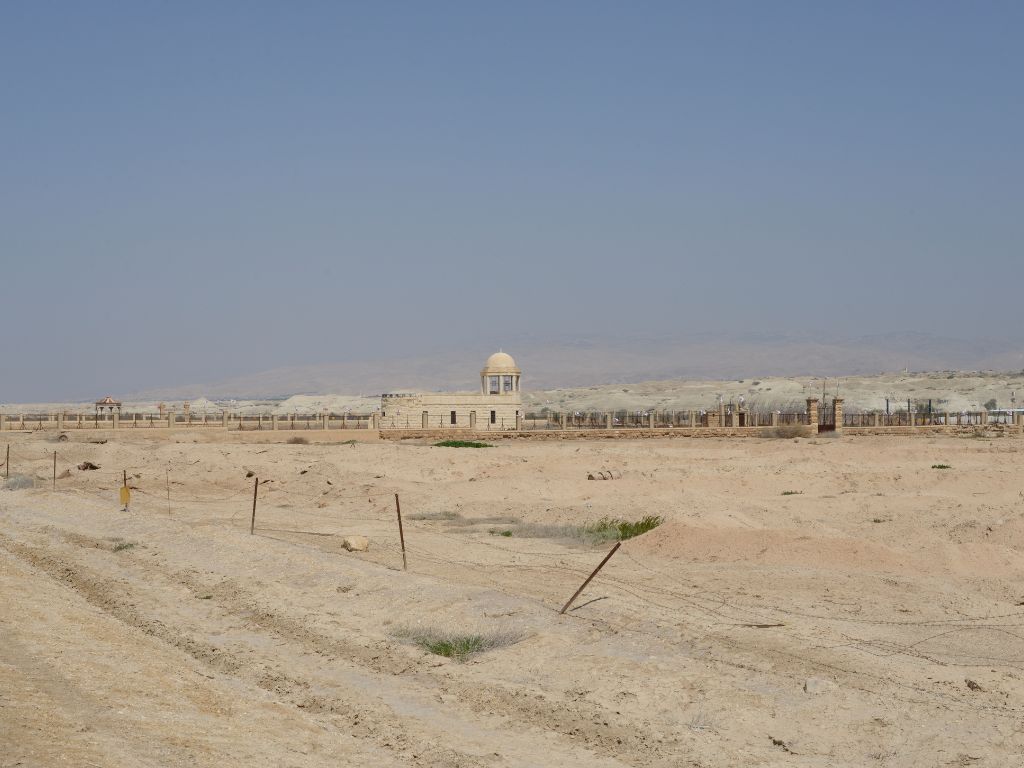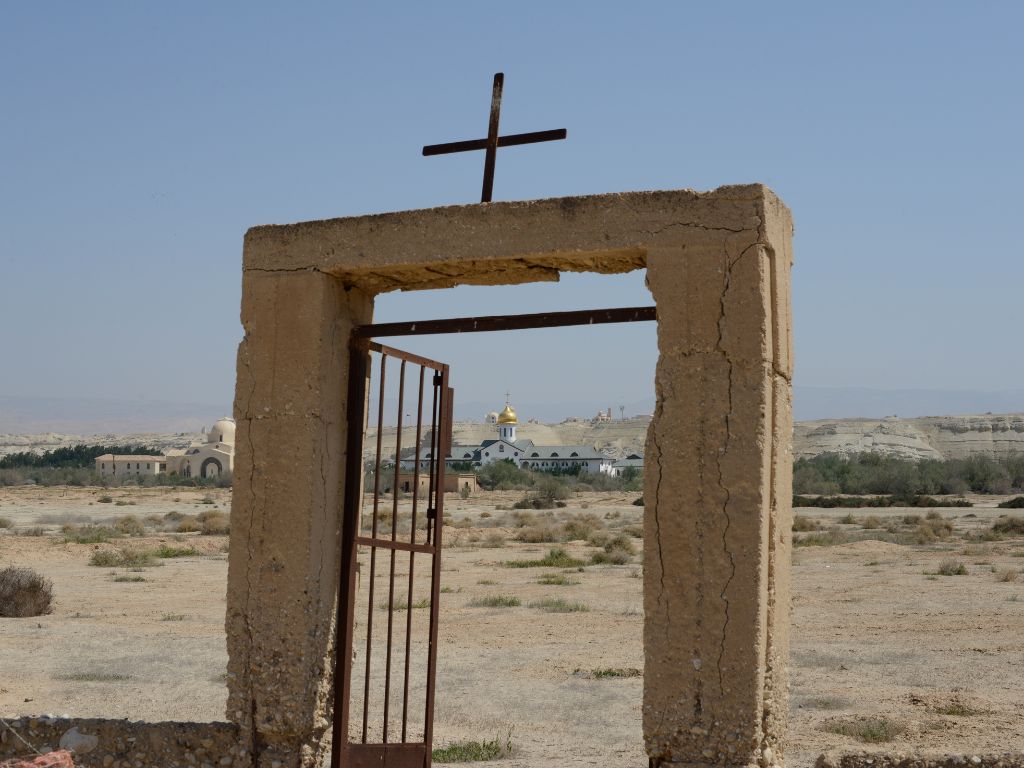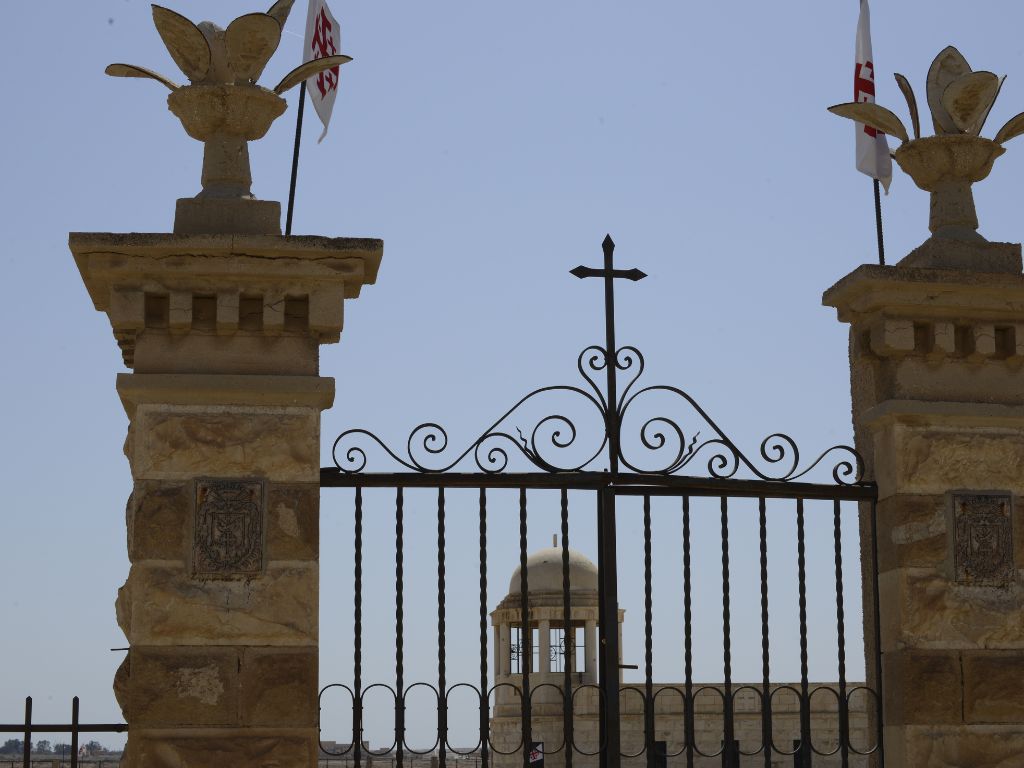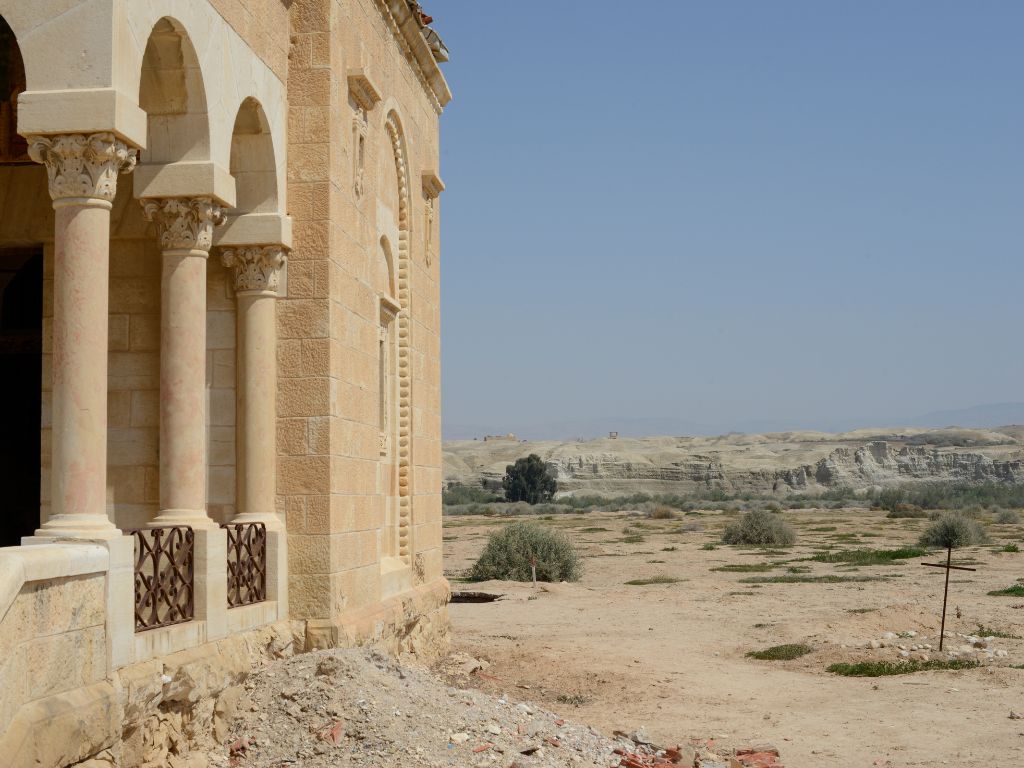Qasr al-Yahud – Stories from the Sacred
Qasr al-Yahud, on the Jordan River’s west bank, is a key Christian and Jewish pilgrimage site. It’s believed to be where Joshua crossed into the Promised Land, Elijah ascended to heaven, and Jesus was baptized. Today, it’s a sacred destination, drawing visitors for spiritual reflection and events like the annual “Pioneers of the Dead Sea” hike.
Written by Zvika Gasner Koheleth, 04-June-2025. Photography by Angela Hechtfisch
Qasr al-Yahud: Joshua Ben Nun and the Crossing of the Jordan River
According to the Book of Joshua (Chapter 3), after 40 years of wandering in the desert, the Israelites stood at the edge of the Promised Land.
Meanwhile, Because he sinned, Moses stood atop Mount Nebo, watched Israel from afar, and accepted that he couldn’t enter the Promised Land. Leadership passed to Joshua Ben Nun, who led the people across the Jordan River.
At this very location—Qasr Al-Yahud (In Arabic: “The palace of the Jews”) —the river miraculously stopped flowing, allowing the Israelites to cross on dry ground.
This moment marked their transformation from a wandering people into a nation with a homeland.
Elijah, Elisha, and the Healing Waters of the Jordan
According to Kings 2 Chapter 2, the prophet Elijah rose to heaven in a chariot of fire and entrusted his prophetic mission to his disciple Elisha.
At Qasr Al-Yahud, Elisha demonstrated the purifying and healing power of the Jordan River.
In one of his most famous miracles, he instructed Naaman—the commander of the Aramean army and a leper—to immerse himself in the river seven times. He did—and the miracle healed him.
John the Baptist Sacred Moment in the Jordan
John Ben Zechariah, better known as John the Baptist, came from a priestly family—his father actively served in the Temple in Jerusalem.
John chose a different path, embracing an ascetic lifestyle in the wilderness. Many scholars believe he lived for about two years in the Qumran community, located less than 5 km from Qasr Al-Yahud.
At Qumran, the community performed daily purification rituals in mikva’ot (ritual baths), a practice that likely shaped John’s teachings on baptism. He began preaching repentance and spiritual renewal through baptism, turning Qasr Al-Yahud into the focal point of his ministry.
Crowds flocked to the river, confessed their sins aloud, and immersed themselves in its holy waters. Among them was his cousin—Jesus of Nazareth.
The New Testament tells how, during Jesus’s baptism, the heavens opened and the Holy Spirit descended as a white dove, declaring him the “Chosen One.” To this day, people often spot white doves in the area—whether it’s a divine sign or human involvement, no one knows for sure.
Pilgrimages to the Biblical Site
During the Byzantine period, Christian pilgrims began visiting Qasr Al-Yahud to retrace Jesus’ footsteps and place of Baptism.
Builders raised many churches and monasteries nearby to welcome the growing number of visitors.
However, Pilgrimage activity continued for centuries until 1967, when the outbreak of the Six Day War turned the area into a military zone.
The army sealed off the area, planted landmines, and shut down the monasteries, leaving them abandoned. The site remained closed military no-mens zone and desolate for years.
In 1981, the “Yardenit” baptismal site was established at beginning point of the Jordan river from the Sea of Galilee, to serve Christian pilgrims while Qasr Al-Yahud remained inaccessible.
Yardenit became a spiritual alternative until access to Qasr Al-Yahud was later restored.
Pioneers of the Dead Sea – A Hike in the Footsteps of the Region’s First Settlers
Held annually—usually in mid-March—”Pioneers of the Dead Sea” is a unique hiking event for the whole family, set in the dramatic landscape where the Jordan River meets the Dead Sea. Once a year, hidden trails and historic sites open to the public, offering a rare glimpse into this biblical terrain.
The route features striking views of the mysterious “Closed Monasteries”—a collection of long-abandoned churches and chapels that stir the imagination and connect hikers to ancient faiths and desert beauty.
The journey begins at the Qasr Al-Yahud baptismal site and follows the Jordan River south toward the once-thriving monasteries.
These structures have remained closed since the post-1967 era and the period known as the “Pursuits,” when access was restricted due to regional conflict and military tension.
Participants can choose from three different trail options. The shortest, a 4.5 km loop, is often the most rewarding—leading hikers all the way to the point where the trail intersects with Wadi Qelt, before turning back.
Don’t let the short distance fool you: walking in desert heat is no easy feat.

